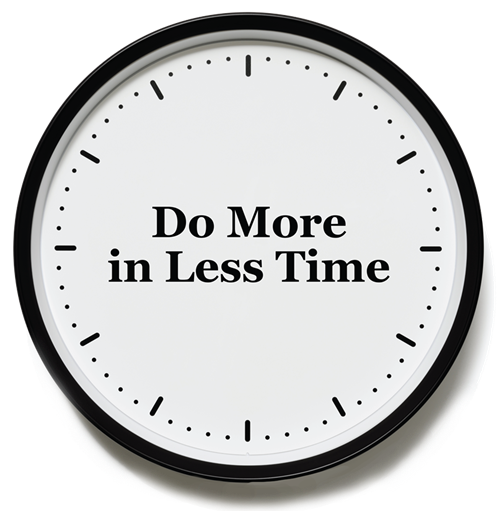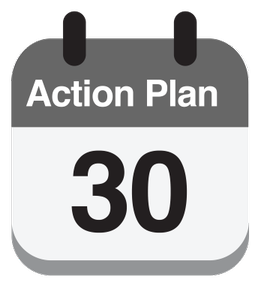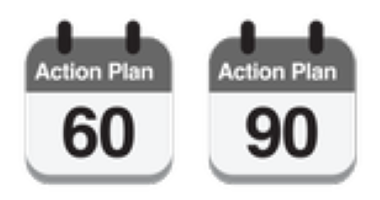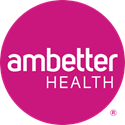Powered by 40 million patient voices each year. Press Ganey's Patient Experience Learning Series, sponsored by Ambetter, will arm you with insights to help you deliver an exceptional patient experience at every step of the patient journey.

-
 Access
Access -
 Communication
Communication -
 Courtesy
Courtesy -
 Care Coordination
Care Coordination
Have thoughts on this material? Share your feedback.
Exceptional Patient Experience Made Simple
MAKING CHANGES MAKES A DIFFERENCE
Improvement is possible with focused effort. Even top performers and those originally performing well can make noticeable increases in their scores. Usually, those with the lowest original scores show the greatest improvement.
CAHPS® (Consumer and Access Availability Assessment of Healthcare Providers and Systems), QHP (Qualified Health Plan) Enrollee Survey, and Access Availability
Provider Impact
There are specific survey questions related to patients getting timely access to care.
Access and Availability Impact
Impact on Getting Appointments and Care Quickly is one of the provider driven CAHPS and QHP composites.
Marketplace Survey Questions
Getting Needed Care
- In the last six months, how often did you get an appointment to see a specialist as soon as you needed?
- In the last six months, how often was it easy to get the care, tests, or treatment you needed?
Getting Care Quickly
- In the last six months, when you needed care right away, in an emergency room, doctor‘s office, or clinic, how often did you get care as soon as you needed?
- In the last six months, how often did you get an appointment for a checkup or routine care at a doctor’s office or clinic as soon as you needed?
Timely Appointments Care and Information
Essential Behaviors
- Empathy - Acknowledge concerns, demonstrate caring
- Compassion - I hear you and this is what I can do
- Listen - Invite questions and actively listen
- Manage Anxiety - Recognize anxiety and mitigate
- Offer Options - Empowerment through choice and autonomy
Processes and Operations
- Expectations - Set patient expectations by creating responses and assist front office staff to discuss delays, walk-ins and scheduling patients
- Open Schedule - Dedicated space for scheduled appointments and walk-ins
- Extended Hours - Before 8:00 am and after 5:00 pm some days during the week and weekends
- Provide Options - Other physicians, offices, advanced practitioner, etc.
- Tele-triage Nurses - Manage urgent calls and situations
Talking Points for Providers
Communicate with Courtesy, Respect, and Listening
Discuss and observe best practices– then focus on those behaviors patients/members share about their interactions with their providers
The Art of Caring
SCIENCE
Balancing the time spent successfully addressing the clinical care of the patient.
ART (HEART)
A patient believing they have made a connection with the caregiver is often reflected in positive experience ratings.
Essential Behaviors
56 SECOND CONNECT
Behavior to go beyond the diagnosis and learn about the person
SIT DOWN
When you sit down eye-to-eye with patients, they feel like the provider has spent more time with them
ACTIVE LISTENING
Let patients tell their whole story without interruption
Access and Telehealth Appointments
Reduce Risk - Same day appointments for members’ urgent needs decreases the risk of Urgent Care and ED visits, and symptom increase due to lack of treatment
Same Day Appointments
Improve patient satisfaction and reduce Urgent Care and ED visits.

Risk of Cancellation
Appointments with lead times greater than 2 weeks are more likely to turn into no shows and canceled appointments
No Show Appointments Opportunities
Improve Access and Utilization
No Available Appointments - Patient calls to schedule an appointment, if nothing is available within the next day or two:
Options
- Wait list - Would you like to be placed on a wait list and called if an appointment becomes available?
- Would you prefer a tele-visit to an in-person visit?
- Cancel equals Wait list - Patient calls to cancel = utilize wait list to fill spot based on visit type preference
Expand Telehealth For Routine Care

IT’S MORE EFFICIENT
With telehealth, the following tasks are removed from the visit process. This makes for efficient use of time and can be a smoother experience for the member
TAKE THESE TASKS OFF YOUR LIST
- Read Vital Signs
- Patient Check-In
- Recording Weight
Increase Appointments, Efficiency, and Revenue
Revenue Changes
Three 10 minute telehealth visits vs two 15 minute in office visits
Medication and Telehealth
- New medication checks
- Medication refills
- Discuss test results
Commitment to Best Practices
CHECKLIST
This checklist will be used to identify the interventions your practice commits to implementing within the next 30 days. Note that the goal of each intervention is listed below the intervention itself.
Follow up on status of implementation, including successes, challenges and next steps needed will be conducted during next month’s coaching session.

Goal: Leverage assessment tools (i.e. provider scorecards) to identify process and/or educational opportunities to boost patience experience.
Goal: Turn missed appointments into a scheduling opportunity for members unable to schedule within their desired time frame
Goal: Increase efficiency for providers and reduce hassle for members
Goal: Improve access to care for members with limited availability
Goal: Maximize opportunity to identify member access needs and ensure member knowledge of after-hours resources
Assessment or Tools Selected
CHECKLIST
This checklist will be used to identify the tools your practice commits to use for training and/or assessment purposes. Note that the goal of each tool is listed below the tool name itself.
Commitment to use the tool indicates a commitment to work towards the specific goal the tool is targeted towards within the next 60-90 days.

Goal: Increase knowledge around intervention to boost member experience. Opportunity to learn from other provider groups in attendance.
Goal: Utilize public social media reviews to identify improvement opportunities and recognize practice accomplishments
Goal: Health Plan analysis of Top Box data from CAHPS Mock Survey identifies strengths and opportunities for change
Goal: Provider education that can be delivered online or by the Health Plan, intended to increase provider knowledge around the annual CAHPS survey and provider impact on member perception of experience.
Goal: Education of provider support staff to increase knowledge around annual CAHPS survey and ways support staff can impact member perception of experience
Performance Improvement and CMS QHP Survey
Here are ways you can improve your patients’ experience and help with upcoming QHP Enrollee Experience survey that your Marketplace patients may receive from March through May this year.
ACTIONS TO TAKE
Before Appointments
- Offer convenient appointment times by keeping blocks of time open for same-day, weekend, and early morning/evening slots.
- Consider offering telemedicine service (by phone or video chat) as an alternative to in-person appointments.
- Confirm appointments with patients one day prior to visit by text message, a live call, or an automated call messaging system.
- Provide options for registering in advance either by a patient portal or set up an online scheduling system so patients can provide their information before coming in.
- Have patients’ records ready and reviewed, and obtain any prior authorizations ahead of visit to expedite care.
- Notify patients early if long wait times are expected or if there are any last-minute requests for lab work.
During Appointments
- Do your best to see patients within 15 minutes of their appointment time.
- Review patients’ prescriptions, make sure they understand the importance of their medications, and alert them any possible adverse drug interactions.
- Communicate when patients’ test results will be available and set reminders to review results with patients in a timely manner.
- Ask patients if they have any questions or concerns regarding their care.
End of Appointments
- Immediately schedule patients’ follow-up appointments to ensure continuous care.
- Account for specialist care by making sure specialist appointments were made or help patients schedule appointments if needed.
- Encourage patients to use the patient portal, which lets them access their health records and ask providers questions.
- Share health records with patients’ other providers to keep everyone up-to-date.
Communicate with Courtesy, Respect, and Listening
MAKING CHANGES MAKES A DIFFERENCE
- 92.4% of consumers use online reviews to guide most of their ordinary purchasing decisions.
- 60.8% of patients say they’ve avoided doctors based on negative reviews
- 59.9% of patients say they’ve selected a doctor based on positive reviews
- Doctor’s online reputation is very important – more than any other industry
- 3 times more than Hotel Reviews
- 2 times more than Restaurants & Bars
Personal Doctor Communication Survey Questions
- In the last six months, how often did your personal doctor explain things in a way that was easy to understand?
- In the last six months, how often did your personal doctor listen carefully to you?
Talking Points for Providers
Communicate with Courtesy, Respect, and Listening
Discuss and observe best practices– then focus on those behaviors patients/members share about their interactions with their providers
The Art of Caring
SCIENCE
Balancing the time spent successfully addressing the clinical care of the patient.
ART (HEART)
A patient believing they have made a connection with the caregiver is often reflected in positive experience ratings.
Essential Behaviors
56 SECOND CONNECT
Behavior to go beyond the diagnosis and learn about the person
SIT DOWN
When you sit down eye-to-eye with patients, they feel like the provider has spent more time with them
ACTIVE LISTENING
Let patients tell their whole story without interruption
Behaviors, Processes, and Operations
BEHAVIORS
Show interest as a person, allow time to tell their story and tailor communication based on the individual
Repeat the patient’s own words in responses, use Parroting – also called Teach-Back or Show-Me
Repeat instructions and demonstrate key points to increase patient comprehension, avoid jargon
Assess patient capabilities and consent to do so
PROCESSES & OPERATIONS
- Visual Aids improve patients’ understanding
- A picture is worth a thousand words— use 3D Models and illustrations
- Provide a medication calendar complete with clear instructions
Give patients something in writing to refer to after the visit. Keep it short and simple and highlight key messages.
Enlist high-performing providers to mentor colleagues and help them improve. Share patient experience survey
results during meetings or huddles.
Power Listening with Empathy
Raise Your EQ (Empathy Quotient)
- Empathy Statement: Use a descriptive word to restate your patient's feelings.
- Stop: Take a moment of silence and give your patient time to think and speak.
- Probe: Ask open-ended questions and allow your patient to tell their story.
Build an Empathy Statement
Introduction - linking word - name the emotion
Examples:
- I can imagine that this is very frustrating
- I can see why you're anxious
- I can hear how upset you are
- It sounds like you're very disappointed
Sticky Teachable Moments
THE TEACH-BACK (PARROTING) METHOD
- Make it Memorable: Parroting also called Teach-Back or Show-Me is a method used to confirm a patient (or caretaker) understands what their provider has told them. If a patient can repeat or parrot back what their provider has told them, then we know they understand.
- RX is a Key Driver: Medication management is a key driver in patient experience scores.
- Make Medication Management a Daily Practice: In daily practice, use the Teach-Back method to help patients understand their medication routine

In Less than a Minute

Did you know?
- It only takes 56 seconds to make a meaningful and personal connection with your patient?
Go-to Communication Approach
WHAT’S YOUR STYLE?
| Positive | Negative | |
|---|---|---|
| Solve | Allows you to quickly address the patient’s issue | You may not have identified the real issue |
| Criticize | Caution: To do this well, TRUST must exist | Elevates emotions or forces patient to withdraw |
| One-Up | When personal, may help you “connect” with patient | Over time patient becomes frustrated. Feels they can’t “win” |
| Prove | Allows you to get the answers you seek | May not be the right question |
| Empathize | Helps to manage patient emotions and open up communication | Can sound insincere if listener is not committed to this approach |
Exceptional Patient Experience Made Simple
MAKING CHANGES MAKES A DIFFERENCE
Improvement is possible with focused effort. Even top performers and those originally performing well can make noticeable increases in their scores. Usually, those with the lowest original scores show the greatest improvement.
Courteous, Helpful Staff
ESSENTIAL BEHAVIORS
Patient Enters
- 15 feet: Make eye contact
- 10 feet: Greet the patient
Use the 15/10 Rule
- Make eye contact when patient is 15 feet away and greet the patient at 10 feet away
- Thank patients for visiting the practice prior to their departure
- Try to answer questions in an affirmative way including alternatives if the request cannot be accommodated
Give Patients Instructions
- Provide guidance in obtaining additional tests and treatments
- Walk them through the logistics to schedule an appointment, where the facility is located, what prior steps are needed, etc.
- Ask if any questions or concerns
- Avoid jargon
Train Staff NOT to multitask with patients
- Staff should look up from the computer when someone approaches the desk/reception area
- Body language should make people feel welcome
PROCESSES AND OPERATIONS
Train all staff to schedule patient appointments
Establish on-line registration service - Demonstrate how the process works and the service benefits
Review check-in, check-out, referral & scheduling process for redundancies - Being asked for the same thing is frustrating, so explain redundancies needed for safety
Grant front-line staff the authority to say “Yes” - Immediate decisions will solve problems and provide good customer service
Develop service standards for staff - Hold staff accountable for standards for patients and colleagues alike, including physicians
What's Your Go-To Approach
| Positive | Negative | |
|---|---|---|
| Solve | Allows you to quickly address the patient’s issue | You may not have identified the real issue |
| Criticize | n/a | Elevates emotions or forces patient to withdraw |
| One-up | When personal, may help you connect with the patient | Over time, patient becomes frustrated, feels they can’t win |
| Probe | Allows you to get the answers you seek | May not be the right questions |
| Empathize | Manage emotions and open communication | Sounds insincere if you’re not committed to approach |
Follow Through Gaps
THE POWER OF FOLLOW-THROUGH
Sometimes patients are not happy with services and information you provided, and they express dissatisfaction to us.
Based on intensity of expressions, when we speak to patients we can identify if their response needs fall into one of three types, each requiring different response (red, orange, blue).
Whether an individual has a Red, Orange, Blue reaction depends on:
- The size of gap between expectations and reality
- Impact of the service failure
- Personal reaction tendencies
RED ANGRY
- Feels angry and frustrated
- Believes she/he isn't the victim
- Reacts emotionally
ORANGE ANNOYED
- Feels annoyed
- Believes experience has fallen short of expectations
- Expresses irritation
BLUE AGREEABLE
- Appears to roll with the situation
- Looks for resolution
- Does not express emotion
CUSTOMER SERVICE TURN AROUND STEPS
If the patient is responding Red, they need empathy:
- Allow venting
- Listen actively
- Plan follow up
If the patient is responding Orange, they want a sense of urgency:
- Recognize members’ need to fix the issue
- Provide options
If the patient is responding Blue, they need assurance:
- Be truthful
- Never blame others
Listening and Language Builds Trust
BUILD TRUST BY FOLLOWING THE ABCs OF ACTIVE LISTENING
Listen for verbal cues
- Who
- What
- Where
- When
- Why
Actively Listen, Lead with Empathy, Minimize Distractions, Refrain from Interrupting.
- Communicate your goal to understand
- Summarize
CHOOSE POWERFUL WORDS WHEN SPEAKING WITH PATIENTS
Powerful Words
Let me make sure I understand
In my experience
I will ...
You are welcome ...
It’s my pleasure
I would be happy to do that for you
Trigger Words
I don't know
No ...
I can't
Our policy is ...
No problem ...
You’ll have to ...
We’re understaffed ...
Every Patient is Unique
SAME QUESTION, DIFFERENT PATIENT
Because you’ve heard the same question 10 times a day (2,500 times/year), it’s easy to forget that the patient in front of you is asking that same repetitive question for the very FIRST TIME.
Even though you’ve answered Patient A that doesn’t mean Patient B knows.
At this especially vulnerable time, patients are bombarded with situations, terminology, and spaces, etc. that are totally unfamiliar. Many may not even have initial questions because they don’t know where to start.
But all patients have questions - expressed or unexpressed

Daily Huddles Improve Patient Experience
The Daily Huddle is the #1 most effective method to improve patient experience by focusing everyone on the patient.
Things to Keep in Mind
To prepare for the day and to look forward to the next 1-2 days to ensure an excellent experience by patients and team members
Private area with sufficient space
Identify 1-3 huddle champions in your specific organization to review this information and start the daily huddle process with the broader team
Encourage staff to provide feedback for improving the huddles and ensuring their value
Huddle Best Practices
Determine Timing and Frequency
- Good - First thing in the morning for 5 to 8 minutes
- Better - Morning and afternoon huddles
- Best - Every change of shift or every 4 hours
Clear Roles and Responsibilities
- Good - Everyone participates - Providers, Clinical, and Non-Clinical Team Members
- Better - Provider or practice leader facilitates
- Best - Everyone takes turns facilitating huddles
Defined Agenda
- Good - Defined agenda for each huddle
- Better - Use technology to identify patients with specific needs
- Best - SBAR format for huddle conversations
Topics Covered
- Good - Address patient and day’s schedule
- Better - Address schedule, staffing, call backs, gap closure, patient needs
- Best - Close with things that we need to know, change, and do differently
Huddle Agenda Template
Use the Daily Huddle Agenda:
- Agenda:
- No Shows and Cancellations from the pervious day
- Today's Patients
- Staffing and capacity
- Patients with chronic conditions
- Tomorrow's Patients
- Follow-up on test results and consults
- Outreach based on clinical complexity
- Orders needed to be entered
Pre-visit Planning and Implementation
10 STEPS TO SAVE TIME, IMPROVE CARE, AND INCREASE SAFETY
- Re-appoint the patient at the conclusion of the visit
- Use a visit planner checklist to arrange the next appointment
- Arrange for laboratory tests to be completed before the next visit
- Perform visit preparations
- Use a visit prep checklist to identify gaps in care
- Send patients appointment reminders
- Consider a pre-visit phone call or email
- Hold a pre-visit care team huddle
- Use a pre-appointment questionnaire
- Hand-off patients to the physician
Process and Operations Considerations
Providers dedicate time to review medical records
- Demonstrate to patients that their visits were anticipated
Conduct post-visit calls
- Determine when and who will make the call and an escalation process for immediate needs
Ensure office staff knowledgeable of test results time frames
- Help staff in managing patient expectations
Offer patients simple and thorough printouts/handouts
- Detailed, easy-to-read information on referrals or medication including pharmacy instructions
Conduct daily huddles
- Day-of, pre-visit planning to align office staff and providers

Potential Challenges
- Setting aside dedicated time to review medical records
- Conducting post-visit calls
- Referral process
- Coordinating with other providers
- Alignment of office staff and providers
Care Coordination Needs Solid Processes
Referring Provider
Needs to understand:
- Who to refer patients to
- How long is the wait to be seen
- What information is needed for any prior authorizations
- Medical group referral
- How to follow up on referrals
The Patient
Needs to agree:
- The referral is the best treatment option
Needs to know:
- What they need to do
- Find their own specialist?
- Schedule their own appointment?
- Work with their Health Plan to get prior authorization
Specialist
Needs to have a process for:
- Getting referrals
- Getting information back to the referring provider
Need to assure:
- Prior authorizations have been completed
Need a process for:
- Scheduling an appointment with provider and/or additional services
Patient Facing Behaviors
To prepare for the day and to look forward to the next 1-2 days to ensure an excellent experience by patients and team members
Consider effects on whole person and their needs, not just the disease, "Which of the options that we just discussed work best for you?”
Avoid - “We’ll let you know if there is a problem.”
Instead - “Let’s plan to connect either by phone or in person when your test results come in. It usually takes about two days for those to come back. I will have staff schedule that for you.”
Follow-up and follow-through on commitments to patients and family, “We will help you schedule cardiology appointment with Dr. Smith. It may take 4-6 weeks to get an appointment and that is OK. Call the office at this number if you have questions or anything changes before your appointment."
Care Coordination Checklist
Use a checklist to assure patients get all needed information at the end of their appointment
- Instructions about where to direct questions arising post-visit
- Provide reminders of upcoming appointments
- Summarize their care plan overview, invite questions, and validate understanding
- Show them how to access the portal and inform them about how it can be used
- Reminding patient of symptoms to watch for should a problem worsen
Appointment Action Steps
BEFORE APPOINTMENT
- Offer convenient appointment times by keeping blocks of time open for same-day, weekend, and early morning/evening slots
- Consider offering telemedicine service (by phone or video chat) as alternative to in-person appointments
- Confirm appointments with patients one day prior to visit by text message, a live call, or an automated call messaging system
- Provide options for registering in advance either by a patient portal or set up an online scheduling system so patients can provide their information before coming in
- Have patients’ records ready and reviewed, and obtain any prior authorizations ahead of visit to expedite care
- Notify patients early if long wait times are expected or if there are any last-minute requests for lab work
DURING APPOINTMENT
- Do your best to see patients within 15 minutes of their appointment time
- Review patients‘ prescriptions, make sure they understand the importance of their medications, and alert them of any possible adverse drug interaction
- Communicate when patients’ test results will be available and set reminders to review results with patients in a timely manner
- Ask patients if they have any questions or concerns regarding their care
END OF APPOINTMENT
- Immediately schedule patients’ follow-up appointments to ensure continuity of care
- Account for specialist care by making sure specialist appointments were made or help patients schedule appointments if needed
- Encourage patients to use the patient portal, which lets them access their health records and ask providers questions
- Share health records with patients’ other providers to keep everyone up-to-date
MARKETPLACE SURVEY QUESTIONS
- In the last six months, when you visited your personal doctor for a scheduled appointment, how often did he or she have your medical records or other information about your care?
- In the last six months, when your personal doctor ordered a blood test, X-ray, or other test for you, how often did someone from your personal doctor’s office follow up to give you those results?
- In the last six months, when your personal doctor ordered a blood test, X-ray, or other tests for you, how often did you get those results as soon as you needed them?
- In the last six months, how often did you and your personal doctor talk about all the prescription medicines you were taking?
- In the last six months, did you get the help you needed from your personal doctor’s office to manage your care among these different providers and services?
- In the last six months, how often did your personal doctor seem informed and up-to-date about the care you got from specialists?
